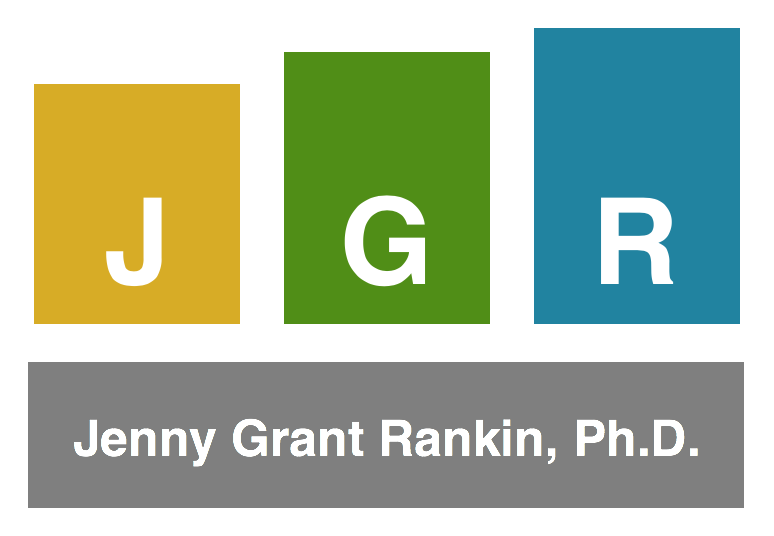Ahmaud Arbery was gunned down simply for jogging, and those who were videotaped killing him remained free for an unconscionable amount of time. George Floyd was arrested for using – possibly unknowingly – a counterfeit $20 bill and pleaded with police to please lift the knee from his neck until an officer killed him.
These are recent stories in the news, but they are not isolated events. They are part of a long history of racism in this country, including its systems and institutions. The #BlackLivesMatter movement persists because racism is an ongoing, deeply rooted problem. The #MeToo movement persists because sexism is an ongoing, deeply rooted problem. The #Pride movement persists because discrimination against the LGBT+ community is an ongoing, deeply rooted problem. Even when the media turns its attention to a new topic, the prejudices in our country, our communities, and ourselves do not go away.
This presents all educators with an opportunity. Children in our country are touched by educators at some point in their lives, typically during key developmental stages and typically for many years. Educators have access to all lives and are thus in prime position to shape our country’s future adults and society. It is clear that what we are currently doing as a field is not enough, because every life lost or tread upon is one too many. Following are seven convictions to expand whatever you are currently doing to fight injustice, followed by encouragement to read and hear from the many voices that have much to add to this dialogue.
Recognize that bias is inherent in your brain. Bias is a fundamental component of behavioral economics, which is essentially your brain’s attempt to be more efficient (see Kahneman, 2011; Rankin, 2019). If you do not accept that you have biases, you cannot identify them and put them in check when they encourage a conclusion based on someone’s appearance or lifestyle.
Recognize where you come from a place of privilege. Privilege (being born from a group less likely to experience microaggressions and injustices; for example, being born White, male, heterosexual, and/or financially advantaged) greatly impacts your experiences. If you are not consistently aware of how privilege impacts your perspective, you cannot identify this influence to catch what might otherwise be a blind spot or an unjust conclusion. For example, as I write this I am perpetually aware that as a White person I do not have some of the experiences that would give me a deeper understanding of this article’s topic, so I continue to read and listen to the works and guidance shared by People of Color and the LGBT+ community in a very careful attempt to do the topic justice, and I make clear in the conclusion that readers should read the works of others on this topic, particularly those of people from groups experiencing discrimination. In being aware of our areas of privilege, we must also be willing to listen and to give up our advantages for a more equitable playing field.
Recognize instances of inequity in your classroom and school. Institutional racism can only be corrected if we each recognize our own roles in the problem. For example, Black students are approximately half as likely as White students to be labeled gifted, even when their test scores are comparable (Grissom & Redding, 2016; Rankin, 2016). This does not mean fewer Black students are gifted; rather, it means thousands of Black students who are indeed gifted are not being recognized by their schools as gifted. This means these students are being robbed of the differentiated educational experiences gifted students require, which in turn impacts these students’ futures. Whatever inequity you find, be tenacious in finding and implementing solutions. For example, universal testing is an example of one change schools should implement that leads to more equitable assessment of students for gifted programs.
Recognize opportunities to close equity gaps and connection gaps in your classroom and school. Do not assume merely because you believe in helping all students that you are automatically equipped to help all students. Teacher preparation and administrator preparation programs do not always adequately arm educators with the best strategies for understanding and connecting with students whose cultures, backgrounds, or experiences differ from theirs, and (even when they do) educators should continually be expanding their skillsets in this area. Books like Yes, You Can!: Advice for Teachers Who Want a Great Start and a Great Finish With Their Students of Color (Thompson & Thompson, 2014), Gender Diversity and LGBTQ Inclusion in K-12 Schools: A Guide to Supporting Students, Changing Lives (Chappell, Ketchum, & Richardson, 2018), and Student Engagement in Higher Education: Theoretical Perspectives and Practical Approaches for Diverse Populations (Quaye & Harper, 2015) should be a fundamental component of every educator’s reading list.
Recognize injustice is not a fluctuating issue. When a racist incident hits the front pages or when news stations all cover the same sexual harassment suit, injustices move farther to the forefronts of people’s minds. But such issues do not disappear when different stories command the media’s attention. When we educators only speak of injustice when it’s the news of the day, we show ourselves to be out of touch with the ongoing slights and hatred people face on a daily basis due only to their race, ethnicity, gender, sexual orientation, or other natural aspect. For example, if a classroom teacher only talks about racism when it’s Martin Luther King Jr. Day, even though racism (in the form of microaggressions, denied opportunities, outright hatred, or any other manifestation) touches her students every day, then she sends damaging messages to some students about her (and the world’s) care for them, taints her ability to connect with them, fails to affirm some students’ experiences while instead affirming an ignorant mindset, fails to help all students manage their biases in ways that will mold a better future, and more. If we are out of touch with such a massive issue on a daily basis, then we are not doing all we can to rectify it.
Recognize that inequity touches every education topic. Every educator has a specialty: maybe a teacher is big on cooperative learning, or a researcher studies collaboration between school administrators. Whatever you perceive as your specific area of expertise, recognize the ways in which inequity touches your topic. Only then can you regularly integrate those factors into your studies and integrate solutions into your practices and what you share with others. For example, when I give conference keynotes on engaging gifted students, I first share data on ways in which some students are excluded from gifted programs on the basis of race, gender, or socio-economic status (and I also share solutions). Only by addressing inequity am I able to truly be speaking about how to engage all gifted students. We cannot view gender as something only transgender and women should be talking about, race as something only People of Color should be talking about, etc. That said…
Recognize opportunities to amplify others’ voices. The same groups who continually face discrimination in our society also face discrimination in our field, and their vital voices are missing from field dialogue (see Rankin, 2018 & 2019 for more resources). Thus, it is important to continually be looking around and asking, “Who should be at this table but isn’t? Who should be speaking on that panel but isn’t?” etc., and to speak up to promote missing voices. For example, CES is the largest technology convention in the world (and one many education and edtech experts attend). When CES was called out by Gender Avenger for featuring zero women in its extensive keynote lineups for both its current and upcoming years (Captain, 2017), CES added five women to its next keynote speaker lineup. As another example, I tweet and post on social media the works of People of Color writing about racism far more than I tweet or post about my own works on the topic, use this blog column as a place to interview others, constantly recommend qualified experts for opportunities and platforms, etc. Ask which voices need to be heard, and never stop promoting diversity of voices in our field.
A single article or series cannot provide everything there is to know about stopping inequity and prejudice in our world. However, I hope this article is but one piece of many that you read (and that you give works by People of Color, women, and LGBT+ community members on this topic priority) as you continually strive to learn more about injustice and what you can do to fight it.
References
Captain, S. (2017, December 4). CES slammed for not including any female keynote speakers this year. Fast Company. Retrieved from www.fastcompany.com/40503227/ces-slammed-for-not-including-any-female-keynote-speakers-this-year
Chappell, S. V., Ketchum, K. E., & Richardson, L. (2018). Gender diversity and LGBTQ inclusion in K-12 schools: A guide to supporting students, changing lives. New York, NY: Routledge.
Kahneman, D. (2011). Thinking, fast and slow. New York, NY: Farrar, Straus and Giroux.
Quaye, S. J., & Harper, S. H. (2015). Student Engagement in Higher Education: Theoretical Perspectives and Practical Approaches for Diverse Populations. New York, NY: Routledge.
Rankin, J. G. (2016, August 10). Gifted programs’ embarrassing secret: Changes are needed to achieve fair inclusion. Psychology Today. Retrieved from www.psychologytoday.com/blog/much-more-common-core/201608/gifted-programs-embarrassing-secret
Rankin, J. G. (2018, April 2). Educators battle discrimination in the field: Part 1: Obstacles in higher education. Psychology Today. Retrieved from www.psychologytoday.com/us/blog/much-more-common-core/201804/educators-battle-discrimination-in-the-field
Rankin, J. G. (2019, February 6). Researchers battle discrimination, Part 1: Higher education. Psychology Today. Retrieved from www.psychologytoday.com/blog/much-more-common-core/201902/researchers-battle-discrimination-part-1-higher-education
Rankin, J. G. (2019, December). Behavioral economics of the mind on design: Identity, bias, and more. She Ji: The Journal of Design, Economics, and Innovation, 5(4), 376–379. doi: https://doi.org/10.1016/j.sheji.2019.11.010
Thompson, G. L., & Thompson, R. (2014). Yes, you can!: Advice for teachers who want a great start and a great finish with their students of color. Thousand Oaks, CA: Corwin.




















